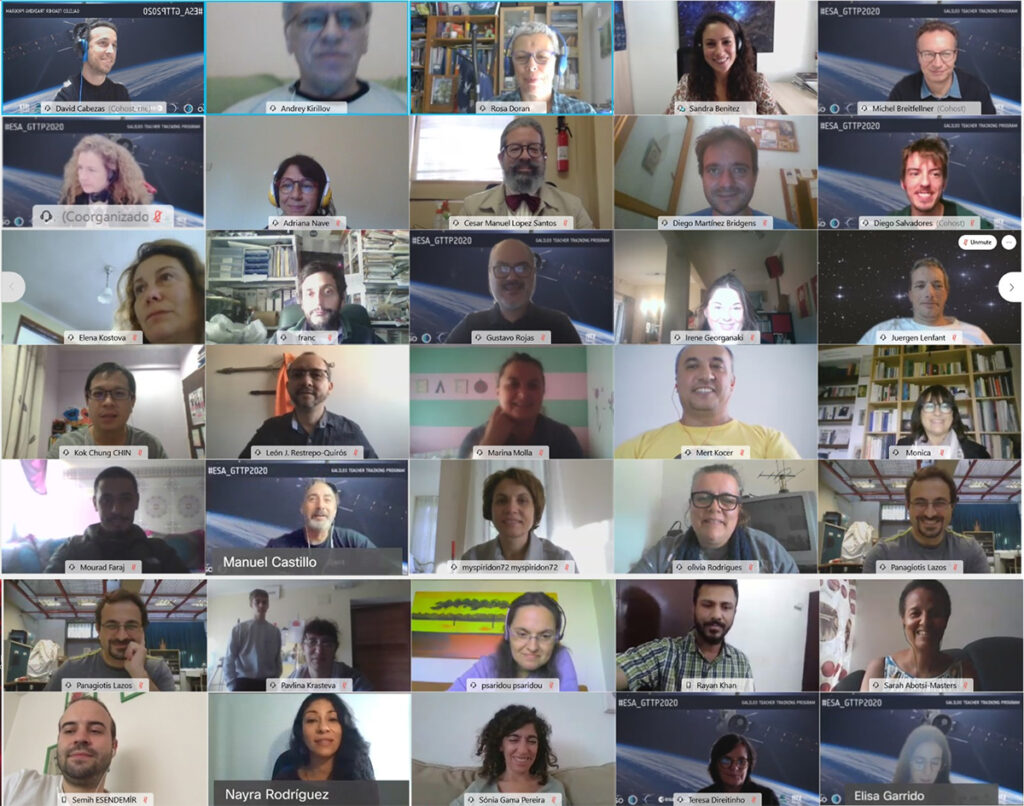This article is based in a Press Release by CESAR (Cooperation through Education in Science and Astronomy Research)

“A journey to space exploration missions“ is the last teachers’ training course CESAR/ESA successfully organized along with NUCLIO, as well as the educative projects with robotic telescopes PETeR and Faulkes Telescope Project, the National Schools’ Observatory and the initiatives Global Hands-on Universe and ESIA as part of the Galileo Teacher Training Program.
In this course, that took place during the third week of October 2020 we counted with the presence of first row astronomy scientists and educators like Günter Hasinger, ESA’s director of science, Markus Kissler-Patig, Head od ESA’s Science and Operations Department, Alejandro Cardesín from Mars Express and ExoMars, Jorge Fauste from the mission SMOS, Anik de Groof from Solar Orbiter, Beatriz Jilete from the Space Debris Office or the head of ESA’s mission operations division Rune Floberghagen among others.
Each of the five days of the course was devoted to one specific topic: Earth, Mars, the Sun, the Cosmic Vision and Science in Society, in order.
This course was also the first CESAR team has organized that was held fully online using the video conference software Webex and the virtual campus Graasp.
Space talks like “gravity, magnetism and space physics” “Space safety” or “ESA Earth Explorers” were alternated with space-related hands-on activities designed to implement with students in classroom, such as “Eclipses and Transits with SalsaJ” by NUCLIO’s Rosa Doran.
“Craters in the classroom & DNA activity” by IAC researcher Sandra Benitez or “Differential Sun rotation and coronal mass ejection” by our scientific contents coordinator Beatriz González.
Although the schedule of the course was a bit picky, overlapping with school times and making live assistance virtually impossible to some teachers, an average of 70 participants from all over the world connected each day.

